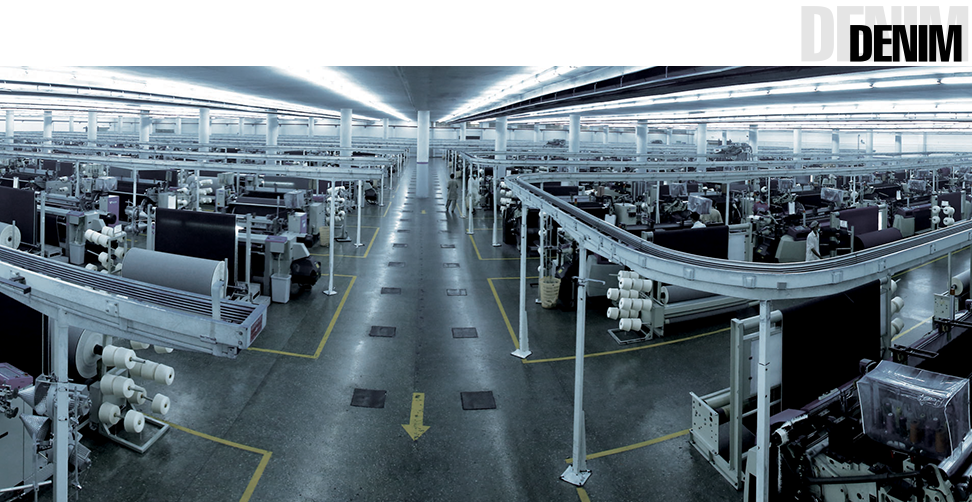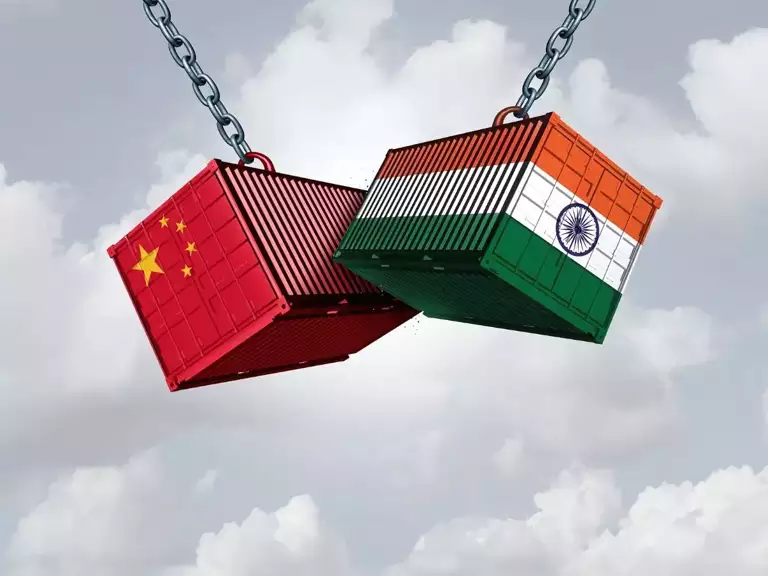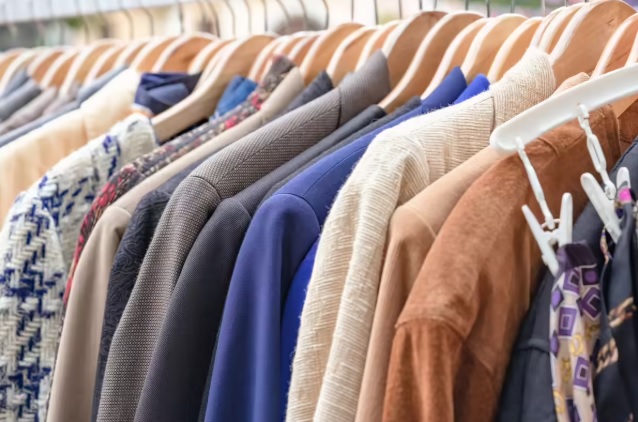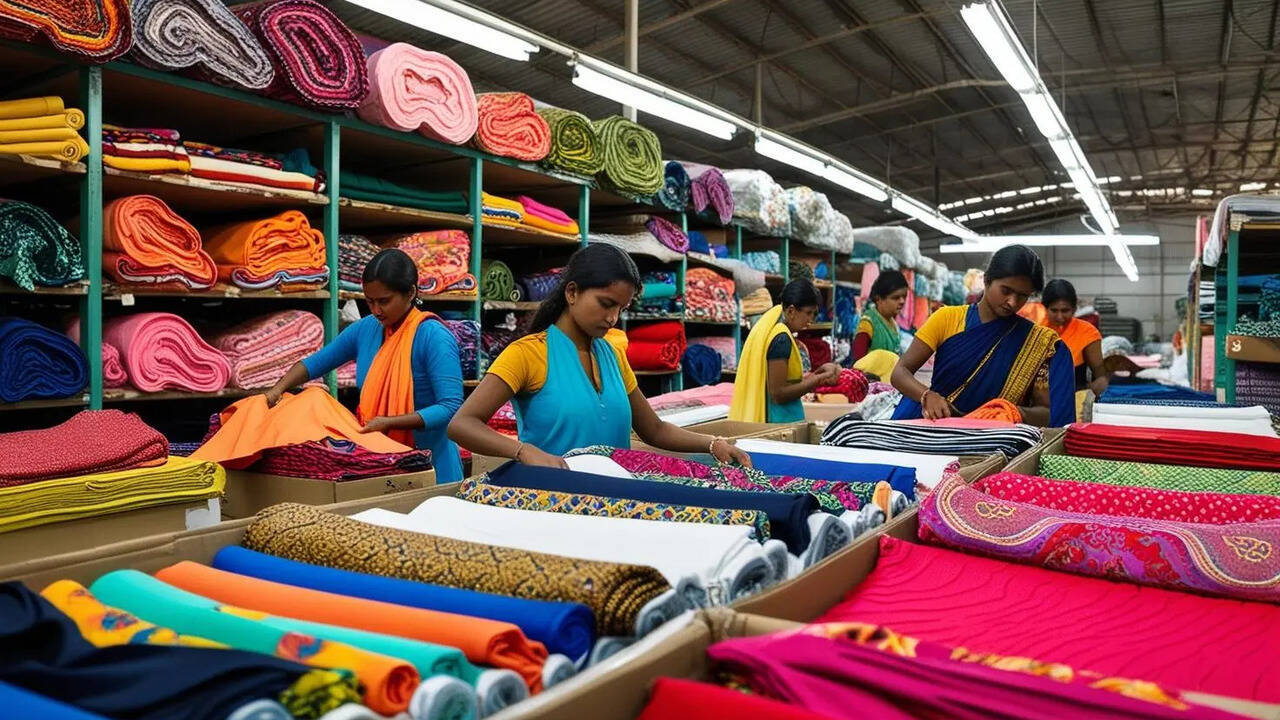FW
"Out of 30 per cent of the total fabric export, 10 to 15 per cent goes to Bangladesh. Bangladesh is its largest export destination. Other than Bangladesh, the company exports to Turkey and Latin America. Since Bangladesh is now able to manufacture premium jeans products with capacity to handle good washes, Soorty Mills has expanded into garmenting in Bangladesh"

Soorty Mills is known for its variety of denim fabrics. The Pakistan-based company Pakistan with offices and manufacturing in Bangladesh produces fabrics under three categories: basic, high fashion and premium. “Our basic is not really basic but a bit higher than standard basic,” says Dhirendra Lodha, GM, Marketing and Merchandising at the company’s Bangladesh office, adding, “Our strength is more on stretch. We manufacture bi-stretch fabrics as well, which has Lycra in weft and warp, in both directions. It is a four way stretch fabric, very comfortable and is emerging as a big category.” The company has also extended its production to garmenting in Bangladesh.
Making a mark with stretch denim

In stretches, Soorty Mills has three categories. Cotton poly spandex, which is high stretch having fabric stretchability of 35 to 75 per cent and used for products like jeggings, the second category gets higher in weight and is meant for true five pocket jeans. “In the true five pocket for women, you will have cotton stretches and blended fabrics. The poly percentage goes down and the stretchability is about 25 per cent. The third category is for premium five pocket, essentially the blends and coatings on a basic denim. These are typically 10 to 10.5 ounces. In volume terms, it is lower but in value terms it is significant,” explains Lodha.
The company has the capacity of carrying out any denim processing technique from basic denim, coated denim, overdyed, multiple fibre blends, to specialty fibres. Elaborating on the Soorty’s USP, Lodha says, “All our products are made of branded Lycra. We don’t use spandex or elastane. We do a lot of our products on dual effects, which is a new age fibre blend with better recovery properties. We do modal blends, bamboo blends. We do special coatings like colour coatings, transparent coatings, all over prints, green cast denims, domo shades, lurex blends, metallic blends, special finishes, garment dyeing and so on.”
Expansion into garmenting in Bangladesh
Out of 30 per cent of the total fabric export, 10 to 15 per cent goes to Bangladesh. Bangladesh is its largest export destination. Other than Bangladesh, the company exports to Turkey and Latin America. Since Bangladesh is now able to manufacture premium jeans products with capacity to handle good washes, Soorty Mills has expanded into garmenting in Bangladesh. “Fashion is becoming very fast now. Every brand wants to do 12 to 14 collections a year. So you can’t keep increasing your lead time. And the lead time is getting impacted by the poor infrastructure. But there is no substitute for Bangladesh in the near future,” exclaims Lodha.
Its garmenting factory in Bangladesh is spread across two floors and has state of the art facilities. It is a Leed certified sustainable design with a focus on recycling and reusing. It uses wind energy and recycled water. Six months from now, the company aims manufacture 50,000 denims a day at this factory.
“Soorty is more into value added products. We are 35 years old company. We are more into denim but non denim is a small part of what we do and is more for in-house consumption. We started as a garment manufacturer in Pakistan. Now we have multiple facilities across Pakistan. We have a capacity of producing 2.5 million garments a month. Soorty is a vertically integrated unit having all processes from spinning to garmenting. In our denim facility, we produce 3.5 million meters of fabric a month. Another mill is in the establishing stage, which will add two million meters a month,” informs Naveed Ahmed, Manager Marketing and Public Relations, Soorty Mills.
While increasing its fabric production capacity to 5.5 million meters a month by next year, the company aims to increase its exports from 30 per cent to 50 per cent in the near future. www.soorty.com
Chinese sweaters, caps, pullovers, sweaters, children’s dresses, mufflers, and blankets are flooding Ludhiana, the hosiery capital of India. They look stylish, attractive and have a large variety of designs and cheap pricing, which make them popular among buyers. These Chinese hosiery items are priced around 15 to 20 per cent lower than locally made products.
It’s estimated that these Chinese imports have occupied around 20 per cent of the market. If an Indian cap costs Rs 400, a China-made cap costs around Rs 300. There are several reasons for the increasing share of such goods in the market. First, they are of better quality due to high class machinery. Also the Chinese government promotes technological advancements. If industrialists in Ludhiana want to install high-tech machines, they have to pay an interest of 10 to 13 per cent. In Japan they pay three per cent. But in China, the loan is interest-free. The industry in Ludhiana wants similar schemes that will promote it and enable it to flourish.
It’s estimated that Chinese products could have a much higher share in the cities of coastal India like Chennai, due to less freight charges. About 85 to 90 per cent of the demand of the woolen market in India is met by Ludhiana. Most of these units are small- and medium-sized.
The mass closure of dyeing units in Erode and other parts of Tamil Nadu has forced weavers in the state to process fabric in upcountry centers, resulting in high transport costs and increased lead time. The predominantly cotton-based spinning and power loom sectors across the nation have been facing severe recession in the last 18 months due to glut in global market and higher duties imposed on Indian textile products than on products from other textile manufacturing countries.
One solution is for textile manufacturers in Tamil Nadu to focus on future investments only in wet processing and further value addition to sustain the viability of 47 per cent of the spinning capacity and 22 per cent of the power loom capacity in the country.
It is hoped that the reopening of dyeing units in Rajasthan and the recently announced MEIS and IES export benefits for fabrics and other finished goods might improve market conditions in the coming months. Against this background, the Southern India Mills’ Association and the Powerloom Development and Export Promotion Council have decided to join hands to study the fabric market on a continuous basis and give feedback to the spinning and power loom sectors and also to the government.
Bangladesh’s export earnings from the US market touched double digit growth at over 11 per cent in the January-November period last year. Earnings from the US in this period of 2015 grew by 11.66 per cent compared to the same period of 2014. Earnings from readymade garment product exports to the US in the 11 months increased by 11.41 per cent compared to the same period of the previous year.
The country’s readymade garment sector has shown good performance in recent months. RMG export earnings from the US in July to December of financial year 2015-16 grew by 15.17 per cent compared to the same period of financial year 2014-15. Double digit export earnings growth in the US market is attributed to good competitiveness and improvement in factory compliance on the part of Asian country’s exporters.
Shaking off the negative impact of the Rana Plaza building collapse and the political turmoil Bangladesh, has started to gain space in the US market riding on the commitment and efficiency of entrepreneurs. Moreover, the ongoing factory inspection by Accord and Alliance is encouraging US buyers to come to Bangladesh.
The apparel and footwear market in the Philippines is registering strong value growth, supported by consumer and business confidence. Increased appetite for these products is stimulated by increasing disposable income of buyers, especially among young professionals in urban areas. There are a growing number of department stores and apparel and footwear specialists in the local market. Sportswear, although among the smallest categories, continues to have strong double-digit growth.
Foreign brands are entering the local market. The presence and opening of shopping malls nationwide make it easier for multinationals to find suitable locations for their brands. The Filipinos’ stronger western fashion awareness, both in style and different brands, cultivated by their exposure to the internet, is another positive factor.
There is an assortment of brands, appealing to a wide range of consumer segments across gender and income groups. A wide network of outlets, strategically located in shopping malls and retail districts nationwide, enables brands to cater to a large base. Apparel and footwear continue to be dominated by smaller players whose brands comprise more than half of value sales.
Sportswear will continue to have the fastest growth in the medium term and will be driven by sports-inspired apparel and footwear.
British top fashion's and most contradictory designers, Vivienne West wood reported a sales, for the year up December 31, 2016, increased 11 per cent, but margins were under pressure following challenges in the retail market and adding to its woes was the weak pound post Brexit. During the period, the company saw a 37 per cent increase in wholesale sales and a 5.3 per cent rise in retail sales, boosting its full-year turnover to £37.5 million, as against a turnover of £33.7 million during a year ago period.
Despite these setbacks, the brand “continues to remain attractive to its wider customer base as sales growth demonstrates,” however, the company suffered a dramatic drop in pre-tax profit which fell to £1.9 million when compared to £2.3 million in 2016. Westwood says drop in profitability was due to a 19 per cent increase in cost of sales due in part to the weak pound post the EU referendum. The brand is now focussing on alleviating these constraints by reviewing pricing and working steadfastly towards cost cutting. The brand is also working on a strategic review of the business targeted at creating a new operating structure. These measures it disclosed will allow it to optimise processes and overall efficiency of the business.
Foreign investors, especially ones Chinese, are buying Vietnam’s textile and garment companies. The enterprises on sale are mostly small ones mostly located in localities with advantageous transport conditions.
Some of the factories comprise production workshops, a security room, a canteen and pleasure room for workers, and electricity systems. The trend has gathered momentum to an extent that there is a view that foreign invested enterprises, and not Vietnam’s textile and garment industry, would benefit from the Trans Pacific Partnership agreement and that with their powerful financial capability and experience, they have taken over Vietnam’s enterprises precisely to get benefits from the TPP.
About 70 per cent of Vietnam’s textile and garment export turnover is made up from foreign owned enterprises, which shows their large operating scale and the big role they play in the industry. Foreign investors are supposed to have a hidden motive in acquiring Vietnam’s textile and garment enterprises. It’s that this way they can dodge the regulations set up by local authorities aiming to restrict investment projects in the textile and garment sector.
In time, it is feared, foreign owned enterprises would become even larger, while Vietnamese enterprises would lose their market share and shrink.
The nonwoven textiles market is set to grow at an estimated CAGR of 7.86 per cent by 2020. The growth in nonwovens is due to increasing technological advancements which have led to numerous product developments.
Polypropylene is set to gain the maximum grip during the forecast period. Polypropylene is a raw material used in the manufacturing of nonwoven fabrics. This has applications in manufacturing hygiene products, home furnishings, and the automobile market. In terms of value and volume, the spun melt technology accounted for the largest share of the market in 2014, and is further expected to act as a catalyst in the coming years too.
Emerging economies – India and China, the Asia-Pacific region – have held the largest share among all the regions in the recent past. The nonwoven fabrics industry is dominated by large players such as E.I. du Pont De Nemours (US), Kimberly-Clarke Corporation (US), Avintiv (US), Ahlstrom Corporation (Finland), and Freudenberg (Germany).
The market is classified on the basis of technology (spun melt, wet laid, dry Laid), material (PP, PET, PE, rayon, wood pulp), function (disposable, non-disposable) and end use (hygiene, wipes, construction, upholstery, filtration). As compared to the traditional woven and knitting technology, a larger volume of materials can be produced at a lower cost by using nonwoven technology.
Most of the apparel retailers in the US reported rise in Holiday sales with a few blaming unreasonably warm weather for decline in sales and demand of winter clothing. Holiday sales are expected to constitute nearly one fifth of the retail industry's annual sales of $ 3.2 trillion. The National Retail Federation sees a sales increase of 3.7 per cent this holiday season, compared to the 4.1 per cent rise last year.
L Brands, for instance, retailer of Victoria's Secret and Bath & Body Works chains, said its December comparable store sales increased 8 per cent, reflecting strength in both its brand stores. The company recorded comparable store sales increase of 4 per cent in the same period last year. Net sales for the month were $ 2.42 billion, up 9 per cent from $ 2.21 billion last year.
Stein Mart registered a 1.8 per cent increase in comparable store sales for the month of December, compared to a 5.8 per cent increase in the year-ago period. Total monthly sales grew 4.7 per cent to $198.3 million from $189.5 million in the prior-year month. And fashion apparel retailer Cato Corporation witnessed its December same-store sales rise 6 per cent, while total sales were up 9 per cent from last year to $118.5 million.
And teen apparel retailer Buckle was one of the apparel retailers, who saw comparable store net sales for December decline 5.4 per cent from the year-ago period. Net sales decreased 4.5 per cent to $182.1 million against $ 190.6 million, last year.
Bangladesh has so far submitted its progress report twice in line with 16-point US Action Plan for Bangladesh, to the United States Trade Representative, the Chief trade negotiator for the Obama administration. However, Bangladesh is yet to receive any positive response.
“We are trying to get duty-free entry for garment items to the US,” Commerce Minister Tofail Ahmed had told reporters while talking about the country's preparations to attend the 10th WTO ministerial conference in Kenya from December 15-18, 2015.
According to Ahmed, Bangladesh is one of the highest tax paying nations in the American market and the country's garment exports to the US have maintained buoyant growth. The higher rate of duty and suspension of trade privileges could not stop the growth of garment exports to the US. Ahmed, who is also the coordinator for the least-developed countries (LDCs) in the WTO summit, will lead the 19-member Bangladesh delegation.
www.lbrands.com
After the US Senate decided to allow duty-free access to Napali apparel products to the US, Bangladesh has decided to put in more efforts at both bilateral and multilateral forums to get duty-free market access to the US. The US House of Representatives on December 11 passed a bill allowing Nepali RMG duty-free access to the US market until 2025.
Bangladesh has so far submitted its progress report twice in line with 16-point US Action Plan for Bangladesh, to the United States Trade Representative, the Chief trade negotiator for the Obama administration. However, Bangladesh is yet to receive any positive response.
“We are trying to get duty-free entry for garment items to the US,” Commerce Minister Tofail Ahmed had told reporters earlier while talking about the country's preparations to attend the 10th WTO ministerial conference in Kenya from December 15-18, 2015.
According to Ahmed, Bangladesh is one of the highest tax paying nations in the American market and the country's garment exports to the US have maintained buoyant growth. The higher rate of duty and suspension of trade privileges could not stop the growth of garment exports to the US.
Ustr.gov Mincom.gov.bd












